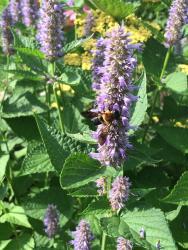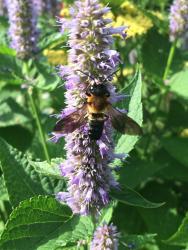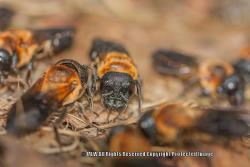Hi Goat Driver and thank you...
I also posted this on the butterflies and bees forum. I did discover what it was right after finally asking. I wrote a bit about it over there. I just haven't figured out how to mark the thread as "solved".

Although they aren't native, and definitely not so beneficial for pollinating kudzu(the plant that ate the south) :
I was intrigued with them. They were only here for several days. I've already read the info on the first link but not the second, so I'm off to do that! Thanks again and if you can possibly mark the thread on B&B forum would you mind doing that for me?- if not dont worry about it



